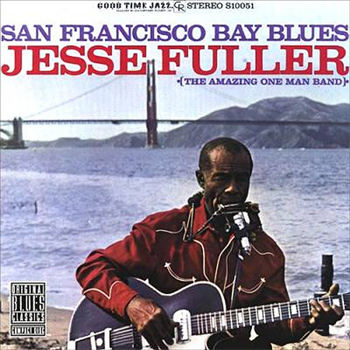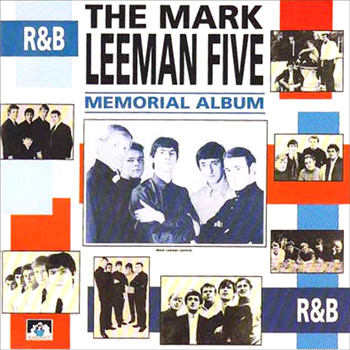Jesse Fuller “San Francisco Bay Blues”

Born in Jonesboro, Georgia in 1896, Jesse Fuller spent most of his childhood growing up in the countryside outside Atlanta under what you could call less than ideal circumstances in a foster home. Fuller spent the next sixty years working a handful of odd jobs, working on the fields and in the farms, on the railroads and in the factories, and out in the street. His resume even included a stint in the circus and an appearance as an extra in the film The Thief of Bagdad. In the years just before World War II, Fuller found himself living in Oakland, CA and working for the railroad. As work became increasingly difficult to find after the end of the war Fuller began to consider, already well into his 50’s, the possibility of a career in music. This should have been an obvious choice for Fuller, as he had already developed a wide ranging repertoire of songs on the guitar as a boy. After failing to put together a dependable band, Fuller decided he’d simply have to become a one-man band.
San Francisco Bay Blues, Fuller’s first album, was released by the label Good Time Jazz in 1963 and features Fuller performing mostly originals, singing and playing guitar while accompanying himself on a variety of instruments, including harmonica, kazoo, high-hat, and the fotdella–a musical instrument of Fuller’s own creation that is essentially an upright bass with six strings that are plucked by a row of foot pedals. Every track is all Fuller and completely live with no overdubs of any kind.
The record kicks off with the title track, “San Francisco Bay Blues,” a completely classic song in every way. One of the quirkiest blues songs ever laid to wax, this tune has a good-time jug band vibe that leaves the listener feelin’ good and waiting for more. Side 2 kicks off with Fuller showcasing his bluesy bottleneck guitar style on “John Henry”, his own re-telling of the classic railroad tale of man vs. machine. “Stealin’ Back To My Old Time Used To Be” is an upbeat rag that features Fuller accompanying himself on acoustic 12 string guitar and harmonica, channeling a country blues sound straight from the Piedmont Georgia pines and backwoods farms of his youth. Fuller wraps it all up with “Brownskin Girl (I’ve Got My Eye On You),” a rollicking country-blues pop tune that sounds, like much of the album, too big to have been performed by just one man.
Fuller’s debut is notable not only for the top-notch singing and songwriting, as well as Fuller’s unique one-man band approach that he had perfected to a tee, but for being such a vivid portrait of, essentially, an old time street performer. Good Time Jazz Records had the foresight to capture Fuller in his prime, playing the songs the way he had intended, instead of forcing him to record with a band backing him, as was becoming more and more common with many of the blues records of the era that were streaming out of studios like Chess in Chicago. Good Time Jazz made the equally smart decision to send Fuller to a quality recording studio, and San Francisco Bay Blues greatly benefits from a wonderful quality of sound, where every instrument can be heard with a surprising clarity– putting the album, in terms of listenability, heads and shoulders above piles of excellent but muddy sounding blues records. The Grateful Dead, Dylan, Clapton, and others have covered his songs and the influence of Fuller and his bold one-man band sound can be heard in groups like Jim Kweskin and his motley crue of jug fanatics and the legions of kazoo blowing washboard wailers that had began popping up around America in the years just before and following the release of this lp. With a sound equally rooted in the Georgia country blues of Blind Willie McTell, the ragtime rompers of Gary Davis, and the old-timey jug sound of groups like The Memphis Jug Band, Fuller’s San Francisco Bay Blues serves as a bridge between the acoustic blues of the late 20s/early 30s and the acoustic blues and jug sounds of the mid-century urban folk music revival that brought hordes of bohemian beatniks into coffee shops from coast to coast–San Francisco Bay Blues brought the blues into a new era and onto the West Coast.
Simply put, San Francisco Bay Blues serves up a heapin’ helpin’ of upbeat, feel-good blues tunes, reminding you that, dark as the days may get, as long as you’re alive you’ve got a reason to dance. Better get ready!
“San Francisco Bay Blues”
![]() CD Reissue | 1991 | OBC | buy here ]
CD Reissue | 1991 | OBC | buy here ]
![]() Original | 1963 | Good Time Jazz | search ebay ]
Original | 1963 | Good Time Jazz | search ebay ]
